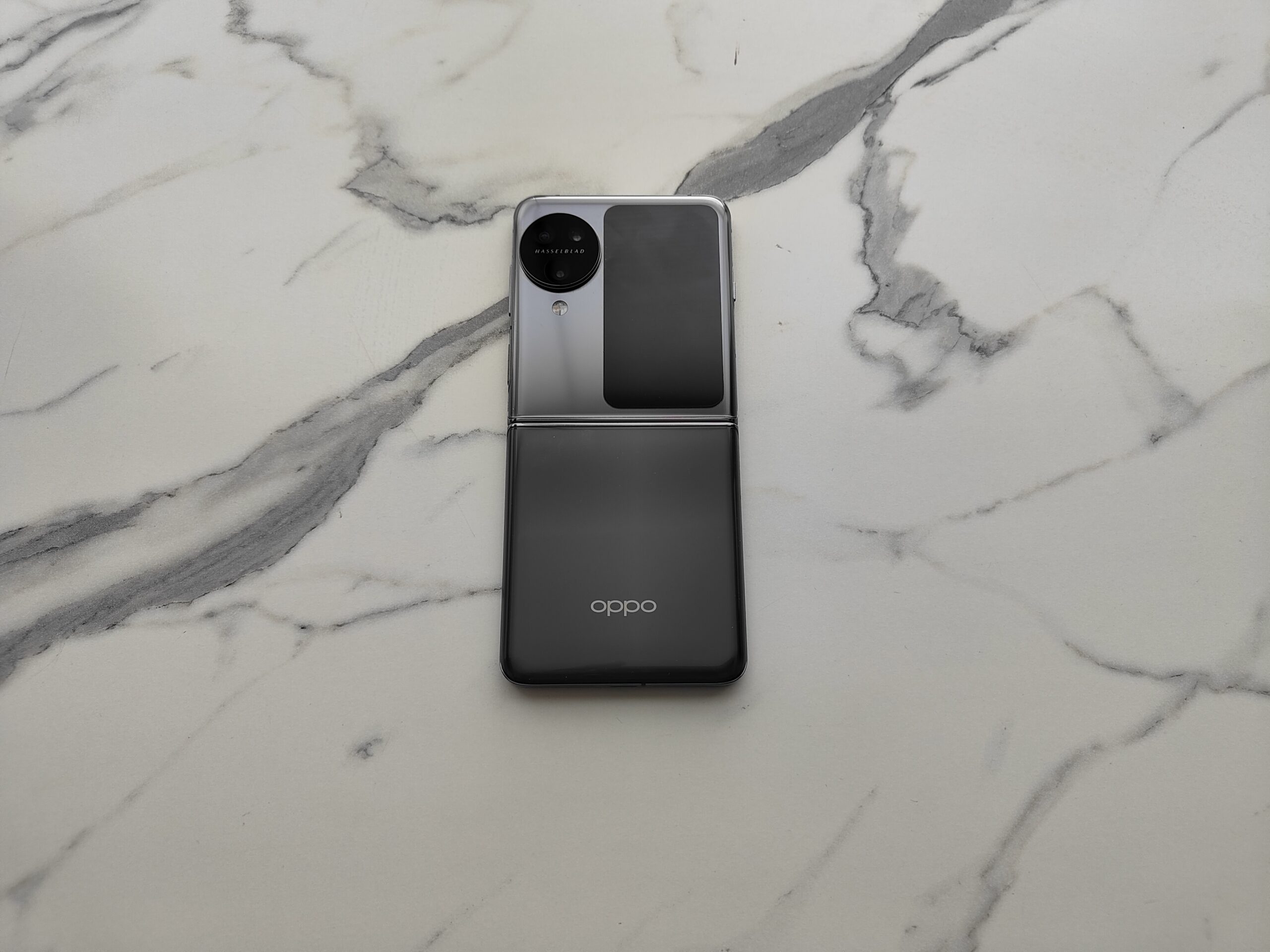Whether you like it or not, flip phones are here to stay! These devices are not just your typical phones but also extend to be a part of your style statement, building up to your ‘aesthetic’ as the young folks say now. However, there is one visible issue with all of the folding and flipping devices, the crease! The ugly visible crease on folding devices has been keeping me from having one as a daily driver but OPPO has gotten close to solving that issue. Not entirely, but it is a step in the right direction. So, how good is the latest flipping phone – OPPO Find N3 Flip? Let’s find out –
Design
This is a rather early rendition of flip phones in the market which limits all flip devices to pretty much look the same when it comes to the form factor. How well a manufacturer designs the upper cover element sets the device apart from all the similar-looking devices. The Find N3 Flip has a clear win in this department with the circular camera cutout called the ‘Cosmos Ring’ which compliments the overall design with flying colors. Special mention to the curved back here which OPPO claims is the most curved glass back panel among flip phones. It looks premium and gives a good in-hand feel. There’s also an alert slider here at the top left of the device which is sturdy and has a nice click to it. The vertical cover screen is a hit or miss as I would rather have a bigger screen on the cover than a small rectangular one. Overall, the design of the OPPO Find N3 Flip screams premium and is sure to attract a few eyeballs unless you decide to hide all that beauty under a pretty boring cover provided inside the box.
Displays
The cover screen of the OPPO Find 3 Flip is not criminally bad in its own right but falls short in comparison to the Moto Razr 40 Ultra. Once you’ve used a cover screen that spans across the entirety of the back cover and also allows you to operate all applications as you would on the front screen, it is difficult to go back to a vertical cover screen. Granted, this is the only flip phone equipped with a triple camera and a telephoto camera which takes up the real estate at the back but it is still underwhelming, also due to the presence of limited app support and slower refresh rate. What’s not disappointing is the 6.8-inch 120Hz AMOLED screen which stuns with its visuals. It is a vibrant screen that makes up for what is lost on the cover screen. What’s also impressive is how well OPPO has handled the crease management. We cannot have a flip device without any visible crease as of now but it’s not as apparent or offensive as other flip devices. Overall, the front display is a treat, and the cover display less much to be desired.
Performance
As one would expect with any flip device in 2023, the OPPO Find N3 Flip also comes with a flagship-grade processor. It is equipped with a MediaTek Dimensity 9200 and I did not face any performance issues with the device during my testing. Shuttling between applications, clicking photos, watching videos, playing games, and more was a seamless experience without any hiccups which is also expected from a device with this chipset. What’s annoying is the inclusion of lockscreen wallpaper services and bloatware applications which actually hamper the user experience on the software side. One would expect at least premium-grade phones won’t be bombarded with bloatware but that’s certainly not the case here. This is one of the biggest batteries present in a flip device with 4300mAH capacity which can be juiced up with a 44W SUPERVOOC charger. The overall battery life of the Find N3 Flip is balanced. I could easily get through the day with moderate usage on a single charge and heavy users might have the same experience. The camera department is where this device shines and stands true to the OPPO legacy. It features a 50MP primary SONY IMX890 lens coupled with a 48MP ultra-wide and 32MP portrait cameras. It is capable of clicking some awesome shots with minimal loss of detail. Additionally, the FlexForm capture which allows users to capture selfies and shoot videos using the main camera setup is also a treat. The selfie camera here is a 32MP Sony IMX709 sensor which is capable of clicking some vibrant shots. However, OPPO continues to use beautification filters by default on their devices which should not be the case. Overall, the OPPO Find N3 Flip is one of the best flip devices launched this year.
Verdict
OPPO Find N3 Flip strikes a balance between performance and aesthetics. It is a dependable device with a top-of-the-line chipset which ensures smooth performance. The software experience requires to be finessed out as the users who’ll pay the premium price should not be subjected to bloat applications.
Rating – ⭐⭐⭐ ½
